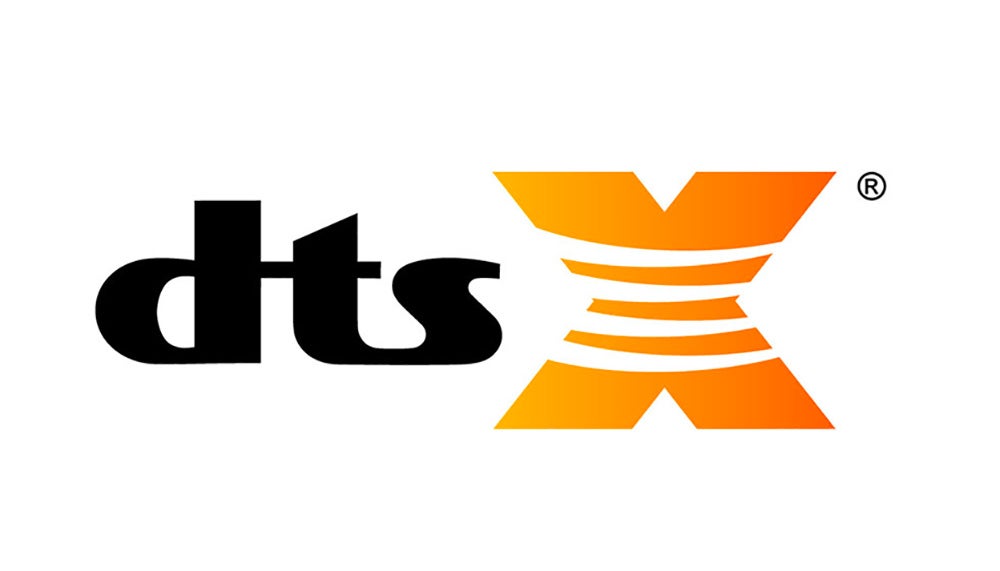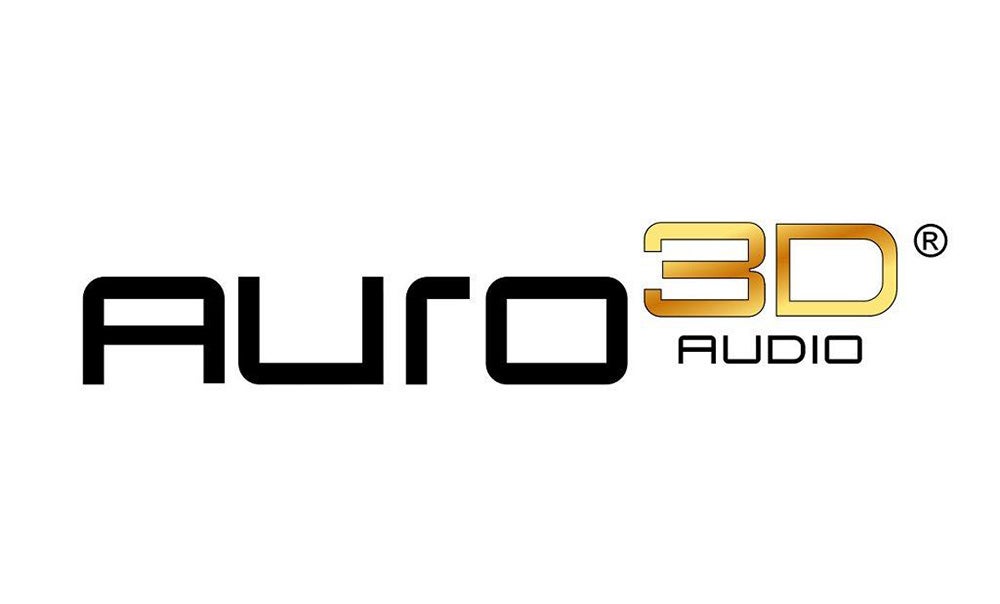More than a decade has passed since Dolby first brought its game-changing spatial audio technology, Dolby Atmos, to cinema screens.
Since then, Dolby Atmos has expanded to cover TVs, soundbars, smartphones, headphones and more. The audio feature is also supported by major streaming platforms like Apple Music, Netflix and Disney Plus, as well as game consoles like the Xbox Series X and Series S.
Keep reading to discover everything you need to know about Dolby Atmos, including what it is, how it works and where you can find it.
What is Dolby Atmos?
Dolby Atmos is a surround sound technology that allows sounds to be positioned in specific places, creating a realistic and immersive listening experience with the listener directly in the centre.


With Dolby Atmos, each sound is no longer limited to a particular channel as they were in pre-existing 5.1 and 7.1 set-ups. Rather, sound designers can specify where a sound originates, the direction it moves in and where it ends. These sounds are called audio objects and convey a more lifelike, three-dimensional presentation of sound.
There are up to 128 audio channels in total and 10 channels are still used for ambient sounds that don’t require any specific placement. These sounds stick with the traditional channel-based approach used in other sound systems. The other up to 118 channels are used for audio objects, which is what makes Dolby Atmos audio so dynamic and all-encompassing.
Audio objects are also compatible with any number of speakers, meaning Dolby Atmos can be heard on the big screen with a cinema-level 64 speaker set-up, or adapted to play through an affordable pair of earbuds.
Of course, Dolby isn’t the only company to introduce object-based immersive audio. DTS:X and Auro 3D create a similar effect, though each system requires a slightly different speaker setup.
How can I listen to Dolby Atmos sound?
The easiest way to hear what Atmos is about is to find a cinema with the necessary technology.
Another option is to upgrade your home audio set-up. Of course, when it comes to upgrading your personal system, 64 speakers is a logistical challenge at best, and utterly crazy at worst. Which is why Dolby and home cinema brands have been introducing a variety of products to expand Atmos’ reach.
All headphones are capable of playing Dolby Atmos as there’s no specific tech required to get it working. Soundbars are increasingly capable of playing Atmos film soundtracks by incorporating upward-firing speakers that shoot audio towards the ceiling or by reproducing the Atmos effect virtually via digital processing.


If you have space for surround speaker set-up, this is the best way of enjoying immersive object-based audio with the ability to add upfiring speaker modules to existing set-ups. To get Atmos from a speaker package set-up, an AV receiver is required to decode Atmos sound. There are plenty of options available, such as Denon’s AVC-X4700H.
So even though you won’t be able to recreate the full 64-speaker cinema set-up at home, you can still get a good Dolby Atmos experience in the living room.
Home Atmos systems are capable of reproducing all 128 audio objects across from as few as seven speakers. For those who want to go all out, home Atmos systems support up to 34 speakers, but such a set-up is unnecessary.
But before you worry about speakers, there’s some other information to be aware of. Firstly, you won’t need a new Blu-ray player. Standard Blu-rays are capable of containing the necessary Atmos data, as are Ultra HD Blu-rays, so unless you feel like upgrading to UHD Blu-ray, there are no format issues to worry about.


The amount of content has been rising with each year. Sky mixes content in Atmos, with Premier League football, events such as the Isle of Wight music festival and shows such as Portrait Artist of the Year, as well as a range of on-demand movies. BT has put its weight behind the format, too, with every Premier League and Champions League match broadcast in Atmos.
The broadest range of Atmos content is available to digitally stream from services such as Netflix, Apple TV+, Disney+ and Tidal, Amazon Music and Apple Music via built-in smart TV apps and streaming boxes like the Apple TV 4K and Roku Streaming Stick.
Atmos in gaming is becoming more popular, with the technology available in a wide range of games such as Halo: Infinite. Xbox has gone big on the technology, with its Series S and Series X consoles featuring Atmos.
What set-up do I need for Dolby Atmos?
For those overhead speakers, you may be wondering whether you’re going to have to drill holes in your ceiling to install the requisite speakers. Luckily, that isn’t necessary.
You can buy specially designed Dolby Atmos speakers. These integrate forward-facing speakers with upward-firing versions, which rebound the sound off the ceiling, mimicking the effect of overhead speakers.


If you like your current speaker set-up, there are speaker modules that can transform the existing set-up into Atmos-enabled one. It’s a case of placing the modules on top of the existing speakers to add the overhead functionality.
Another way is to take the plunge and install actual overhead speakers. As mentioned, home Atmos systems work with up to 34 speakers, so if overhead speaker installation isn’t a problem, you can go Atmos mad.
Before ruining the plasterboard, though, it’s worth bearing in mind that Dolby’s guidance states that using only two overhead speakers will “provide a convincing and powerful effect” while four overhead speakers will give you the “optimum sense of audio movement and precision.”


In fact, Dolby’s reference guides for the best Atmos speaker set-up recommend using 12 speakers at most. Once you’ve got the right AV receiver, you can upgrade your existing 5.1 or 7.1 surround sound by adding two or four ceiling speakers and either a couple of speaker modules or Atmos-enabled speakers.
The rise of Atmos in the home has also coincided with the rise of Atmos-enabled soundbars as a cheaper, less obtrusive way of getting Atmos in the home.


These simpler solutions integrate upward-firing speakers with traditional soundbar tech to deliver an Atmos experience without the hassle. The Sonos Beam 2 uses digital processing to deliver Atmos for around £450, and Denon DHT-S517, which has upfiring speakers, and costs $399 / £379.
Sennheiser’s Ambeo 3D Soundbar takes the Dolby Atmos codec and adds Ambeo 3D processing to create a massively immersive experience. It sounds fantastic, but it’s also one of the most expensive (and gigantic) soundbars on the market.
Atmos on mobile


Because Dolby Atmos is designed to be adaptable to whichever device you’re listening to, you can experience Atmos sound using your smartphone, tablet or headphones. Though as it is on mobile, don’t go expecting the sense of sound above or around you – think of it as just better sound.
Atmos on mobile is made possible by combining traditional virtual surround technology with the object-based audio of Dolby Atmos, the combination of the two allows headphones to reproduce a convincing version of the 3D soundscape.
Dolby told Trusted Reviews that manufacturers can embed Atmos into both software and hardware, which means your device doesn’t necessarily need specific hardware to use it, although Apple’s Spatial audio with Dolby Atmos uses the accelerometers in certain iOS devices to produce the head-tracking effect required.
What is Dolby Atmos Music?


Atmos isn’t just for home cinema aficionados. Its presence has been growing in the music industry too. Dolby Atmos Music does the same thing as Atmos did for cinema, producing music in a 3D soundscape. Currently, Tidal, Amazon Music and Apple Music offer the biggest catalogues of Dolby Atmos Music.
The first Blu-ray audio disc with Atmos sound arrived in 2015 in the 25th anniversary edition of R.E.M’s Automatic For The People. Atmos Music has grown since with Hans Zimmer’s Live in Prague concert film released with Atmos audio, as has INXS’ reissue of the Kick album, Roger Waters’ The Wall and many other titles.
At the 2019 Bristol Hi-Fi Show, Trusted Reviews was treated to a behind the scenes look at classic songs remixed in Atmos. Tracks included Public Enemy’s Don’t Believe the Hype (in orchestral form), the Beach Boys’ God Only Knows (by the Royal Philharmonic orchestra) and Elton John’s Rocket Man.
The end result was interesting, as some songs are better suited to the format than others hence the orchestral versions of some songs. Music studios are putting more music out there in Atmos, though the number of new releases per month is still relatively few, and it also faces competition from Sony’s 360 Reality Audio.
How does Dolby Atmos stack up against the competition?
Dolby isn’t the only company product immersive audio. The DTS:X format was introduced in January 2015 and also uses an object-based system. Unlike Dolby Atmos, DTS:X was originally aimed at home use, before being targeted at cinemas.


How is DTS: X different? In many ways it’s the same, the crucial difference is in the speaker set-up. Whereas Atmos supports up to 34 speakers in the home, 64 in a cinema and requires new speakers/modules to work properly; DTS:X supports up to 32 speakers and will work with your current home speaker set-up. That means that while extra overhead speakers will enhance the DTS:X experience, they’re not necessary.


Another competing object-based, 3D audio system is Auro 3D. Developed by Belgium company Auro Technologies and officially introduced in 2006, the format is based upon a three-layer design: surround, height, and overhead.
The key difference between this system and Dolby Atmos comes down to the speaker layout. With Auro 3D, an additional row of speakers is placed above the traditional row found in 5.1 and 7.1 set-ups. This adds the height element. A single speaker is then placed on the ceiling to add the overhead dimension.
Although Auro 3D also creates a spatial sound field, the company doesn’t use the term audio objects as Dolby does. Auro’s plugins allow sound designers to dictate where sounds should originate and move to, and the format can be used in cinemas, at home, and over headphones, just as with Dolby Atmos.
Films such as The Hunger Games, The Croods, and Red Tails have used Auro 3D in the cinema, but it isn’t as popular as Atmos.
Atmos and VR
With virtual reality (VR) still on the rise, recreating the way we hear sounds makes all the difference to how immersive a VR experience feels.
Dolby has already worked with VR content creator Jaunt to add Atmos sound to three of the company’s VR experiences: Black Mass, Kaiju Fury! and video from a Paul McCartney concert entitled Live and Let Die.
Since then, Atmos has been extended to support VR experiences on iOS, Android, OS X, and Windows. Dolby lists the HTC Vive as a supported device, as long as you have Windows 7 and above. On top of that, the company says the Samsung Gear VR is compatible with Atmos technology while the Meta Quest 2 supports 3D audio, which we presume means it can support Atmos.
Is Dolby Atmos worth it?
So there you have it. Dolby’s surround sound format is an exciting proposition for anyone who cares about audio technology.
We’ve seen manufacturers throw their weight behind the format, especially with ever-cheaper soundbars. Broadcasters have produced more and more content in Atmos, and both gaming VR have thrown their backing behind it.
As long as you have the right kit then Atmos can deliver an experience that’s beyond the limitations of stereo. It’s a whole new world and it’s never been easier to sample.

